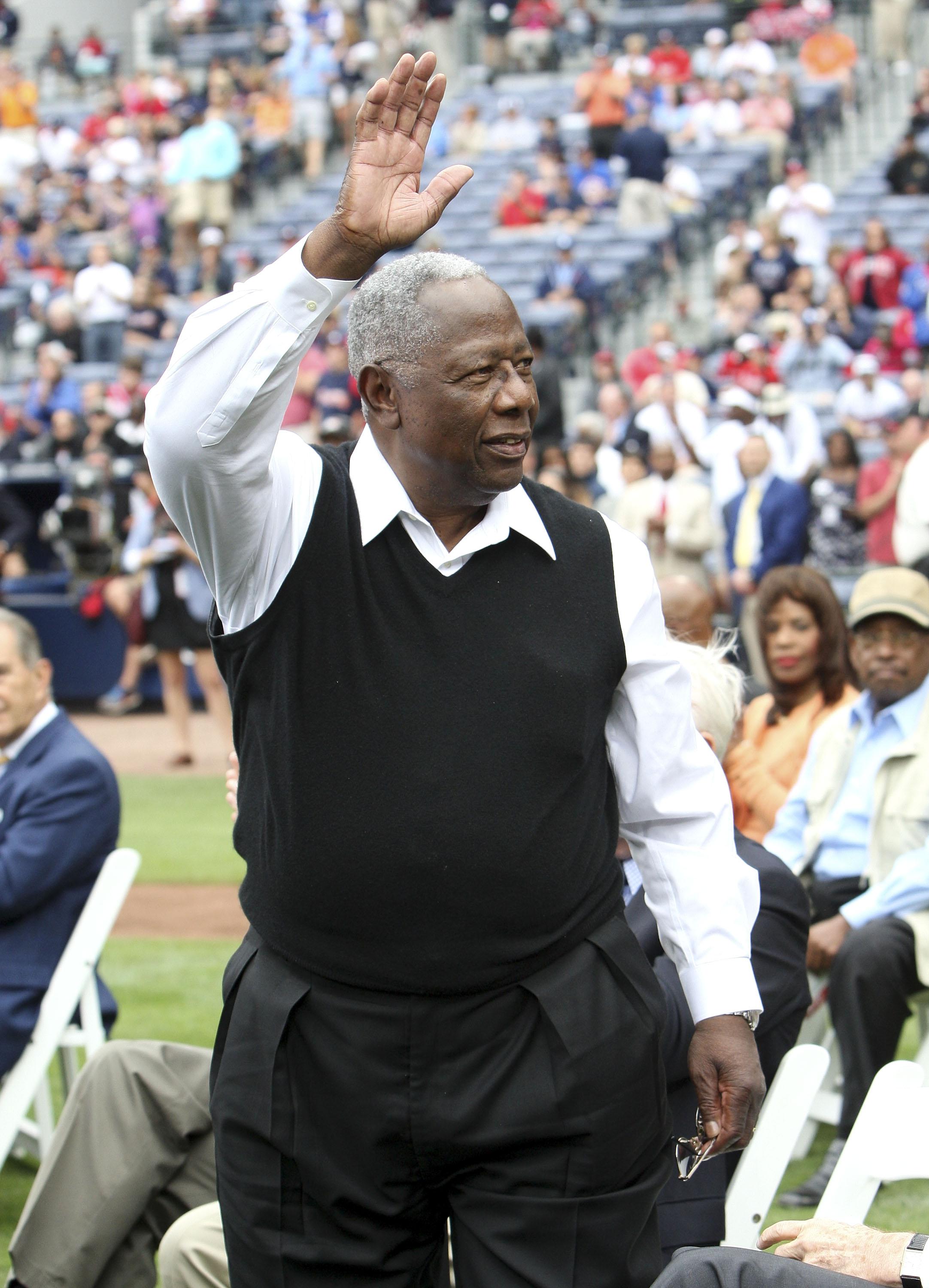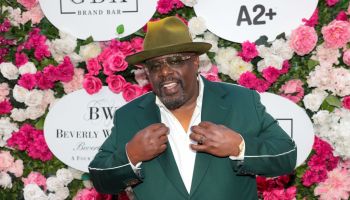
Source: Mike Zarrilli / Getty
Baseball legend and humanitarian, Hank Aaron dies at 86 today (Jan. 22). The cause of death has not yet been released. Aaron did receive the COVID-19 vaccine on Jan. 5 at Morehouse School of Medicine. He told AP News, “I was proud to get the COVID-19 vaccine earlier today at Morehouse School of Medicine. I hope you do the same!” Many fans and supporters remember Hank Aaron’s achievements through the years as this comes as a huge loss to the baseball community, the city of Atlanta and Black people who revered him as a legend in the Civil Rights era and beyond. A quote from one of the greatest athletes, Muhammad Ali, accompanies Aaron’s bio from the Hall of Fame reading that Aaron was, “The only man I idolize more than myself.” A loving tribute to an honorable man who has left his legacy on the field, in his community and to the fabric of our country. Let us celebrate the life of Hank Aaron with a few facts you may not know about the baseball legend:
1. Hank Aaron was born in Mobile, Alabama in 1934.
2. Aaron’s grew up poor and his family could not afford baseball equipment, so he began growing his baseball skills by hitting bottle caps with sticks. Hank and his family were innovative and resourceful.
3. He had his first major league tryout at 15 years old with the Brooklyn Dodgers in 1949. He did not make the team, but he made an impact and returned to school to get his diploma.
4. At age 17, Hank Aaron began his minor league career with the Indianapolis Clown’s organization of the negro leagues.
5. Aaron credits his family for supporting him and helping make his dream of playing baseball come true. He told Atlanta’s Channel 2 News, “If it hadn’t been for my brother, my uncle, sharing their love and making me realize that — although I had a dream at that time — but if I keep looking and pursue it, that I could match it.”
6. In June 1952, Aaron chose to sign with the Boston Braves over the New York Giants, because the Braves offered $50 more a month. At that time, this was an impressive salary for a Black man in America.
7. His first season, Aaron wore No. 5, and he later switched to No. 44 in 1955. That same year, at the tender age of 21, Aaron made the first of his record 21 All-Star selections and his record 25 All-Star appearances.
8. Aaron won the National League batting title in 1956 and won his only MVP award the following year after hitting 322 and finishing in the top three in all three triple crown batting categories.
9. He capped his MVP ’57 season by clinching the pennant with a skilled home run in inning 393 in a seven-game World Series victory over the New York Yankees.
10. The Braves enterprise eventually moved to Atlanta in 1966, and in two years, Aaron was setting major record milestones in Georgia.
11. Hank Aaron was fearful of going to a high-profile city like Atlanta at the time. He recalls Atlanta, Georgia being the epicenter for the Civil Rights Movement with many of the great civil rights leaders like Dr. King and Andrew Young making the city their home. Aaron told Channel 2, “Honestly, I was scared coming to a high-profile city like Atlanta. Knowing that Dr. King was here, Andy Young and some of the other great civil rights leaders that made their home here, and I’m coming from Milwaukee where there was no activity at all … It makes you start thinking about what it is, what can you do, what role you can play. And makes you feel like you kind of shortchanged everybody really, you didn’t do your job.”
12. Aaron became the first player in Major League history to record 500 homers and 3,000 hits. He later went on to hit 40 or more home runs seven different times, finishing third in the MVP voting six times.
13. Hank Aaron hit his career high in home runs, 47 of them and set a new career best in slugging percentage at 37 years old.
14. At age 39, Aaron recorded his eighth 40-homer season finishing that year with 713 for his career, just one home run shy of Babe Ruth’s major league record.
15. Aaron received numerous death threats and enough racist letters that the United States Post Office honored him for receiving nearly 1 million pieces of mail, more than any non-politician.
16. Hank was more than just a baseball player. He overcame racism in the deep south throughout his career and received these death threats while making his historic pursuit of Babe Ruth’s record. In front of 53,775 spectators and a national TV audience, Aaron broke Babe’s record with home run No. 715.
17. Aaron’s son, Lary, who was 16 at the time, said he was terrified when his father made the historic hit. His family was forced to watch him beat Ruth’s record from home because of the terror that this monumental moment caused Aaron and his family.
18. He hit his 733rd and final home run as a Brave on October 2, 1974.
19. Hank Aaron retired in 1976 as Major League Baseball’s all-time leader in home runs. He remains the all-time leader in career RBIs, extra base hits and total bases to date.
20. Aaron was inducted into the National Baseball Hall of Fame in 1982 and received the Presidential Medal of Freedom in 2002.
21. After retirement, Hank Aaron held various positions in the Braves front office. He also has statues outside Turner Field, Truist Park and Miller Field in Milwaukee.
We thank Hank Aaron for his contributions to baseball and American culture. He fought against racism and many naysayers throughout his career, and he still managed to accomplish all of the goals he set for himself. People can learn a great deal about resilience, perseverance and community outreach from the late, great Hank Aaron. Let us honor his legacy today, and continue to uplift his great work as we move forward. Rest easy to a forever legend!
















